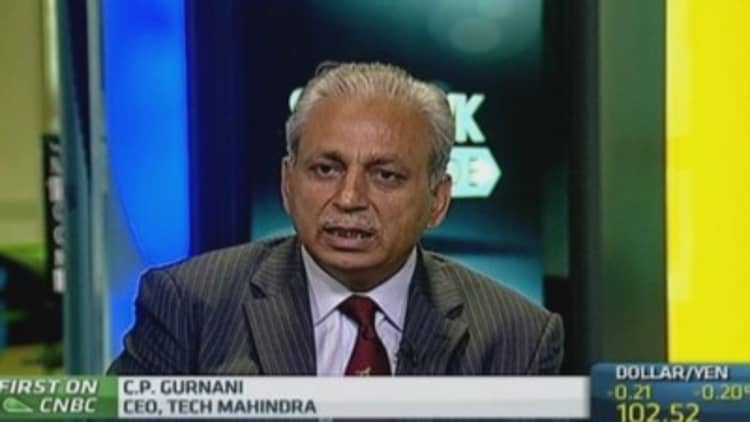India's monsoon season is expected to yield the lowest rainfall in four years, exacerbating the country's inflation battle through higher food prices, economists say.
Earlier this week, the Indian Meteorological Department (IMD) said it expects below-normal precipitation for the June to September period at 93 percent of the long-period average.
The IMD cited the El Nino effect, which has a 70 percent chance of occurring in July or early August. El Nino is the term for a warming of the Pacific Ocean's surface waters as a result of weaker winds.
Read MoreIndia's Modi gets ready to join inflation battle
"Monthly rainfall is likely to be 7 percent below normal during July and 4 percent below normal during August. The forecast of a poor rainfall during July is a cause of concern as food production during the summer crop season is most dependent on the July rain," wrote economists at Nomura in a note published Tuesday.
Impact
Inflation rose to a three-month high of 8.59 percent in April. In late January the Reserve Bank of India said it aims to bring inflation to 8 percent by early 2015 and 6 percent by early 2016.
If rainfall disappoints, the decline in food production would make this task more difficult, said Glenn Levine, senior economist at Moody's Analytics.
Read MoreThis country may spark next commodity supercycle
"India has a lot of import controls so every time there is a hit to domestic [agricultural] production [it] pushes up food prices," he said.
"Looking at the consumer price index, there is a disproportionate share of food prices so that can easily have a large effect," he added. Food has a 46.7 percent weighting in India's consumer price index.
Citi Research expects lower agricultural production to result in a 50 basis point increase to its fiscal 2015 consumer price index forecast of 8 percent.
However, Morgan Stanley expects consumer price inflation to decelerate to around 7.5 percent by March 2015.

Chances of policy action
Earlier this week, the government held discussions on how to deal with low rainfall. Jitendra Singh, the Minister for Earth Sciences, said that agencies are currently working on a distribution plan that could potentially make up for the shortfall.
Read MoreThe top 4 priorities for India's new government
Citi analysts are optimistic that Modi's new government will take action based on his latest commitment to bring down inflation.
"Given the style and substance of Modi's governance, the odds of speedy government action to mitigate a poor monsoon are high. One could expect (1) offloading food-stocks as the need arises (2) permitting imports of essential commodities (3) modification of the Agricultural produce market committee (4) setting up a price stabilization fund aimed at curbing speculation and (5) unbundling Food Corporation of India operations," they said
If deficient rainfall leads to a drought, it could shave 50-90 basis points off their fiscal 2015 gross domestic product estimate of 5.6 percent, they added.
Moody's Levine warned that government assistance may be limited.
Read MoreUnder Modi,can India's economy take on China?
"I expect the new government will have to do something as it is a matter of human welfare. They may reluctantly provide some assistance but at the same time, they're also trying to get rid of tactics used by their old predecessors, who would usually have a knee jerk reaction and throw money at the problem," he said.

